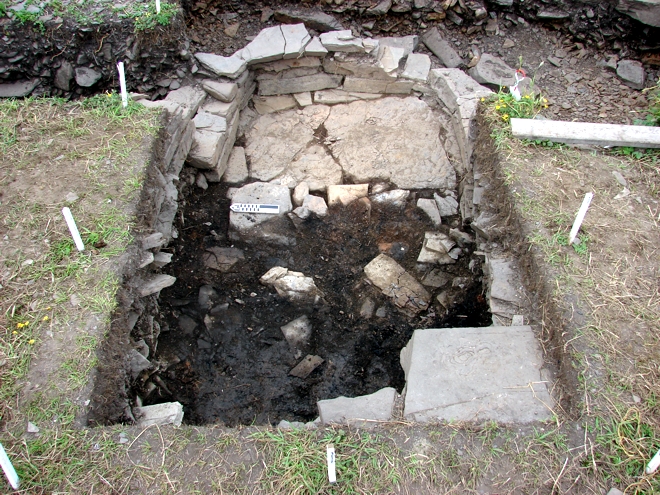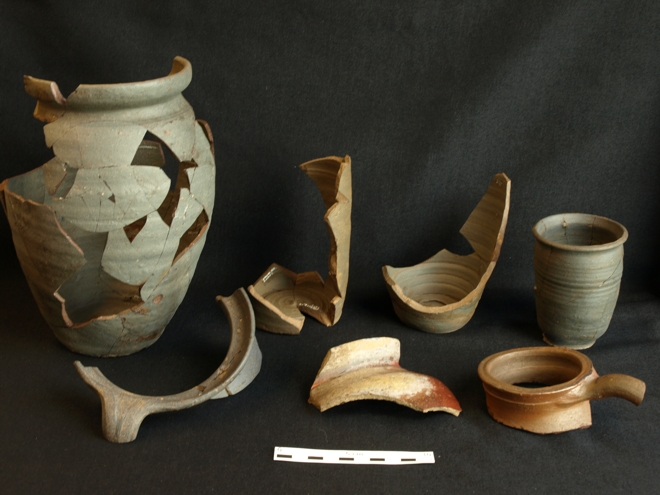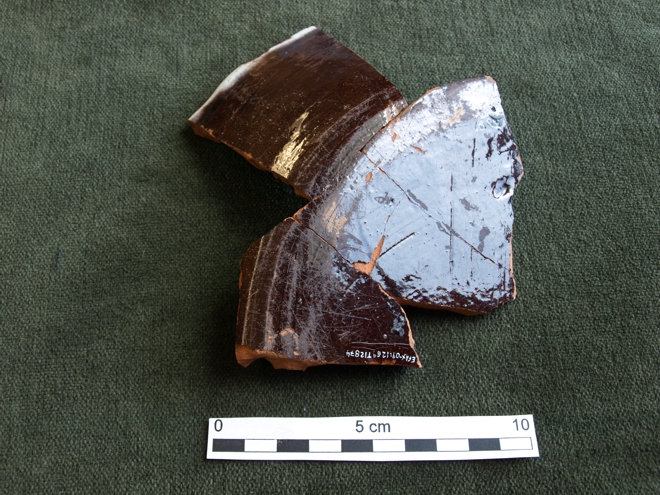Cookrooms
Cookrooms were a central feature of all fishing rooms. Lightly constructed of poles and covered with a wattle of boughs, they permitted the crew to get out of the weather and gather around a hearth to enjoy some hot food. Early modern mariners depended on sea biscuit or hard tack, peas and beans, salt cod, salt pork and beef, enriched with a little lard, butter or olive oil, livened up with mustard and washed down with surprisingly large quantities of wine or, in the case of Breton crews, cider. Fishing crews could also count on fresh fish and the officers carried chickens or even swine and goats on board. They could also hunt for local seabirds or caribou. In later centuries, officers planted gardens at the fishing rooms, raising peas, kale, onions and lettuce. Chives still flourish at some of the most isolated abandoned French fishing rooms!

(EfAx-09, Feature 1248). The charred remains of two or three successive burnt structures overlie the masonry
floor. Excavators recovered numerous faunal remains from the area immediately in front of the hearth.
Archaeology
The remains of possible cookrooms at Champ Paya (EfAx-09) indicate that they were, after the stage, the largest structures on the fishing room - up to about 6x6m with a substantial stone hearth on one wall. The crew paved the cookroom floor with flagstones or cobbles and could roof it with sails from the ship, supported on simple posts and beams. Faunal remains from Champ Paya indicate that pork was an essential part of the diet, together with cod.


were excavated at the Champ Paya waterfront (EfAx-09, Area C). Photo: Amy St John
Rouen and other centres and worked well for cooking and warming foods. Note the use wear on the base.
Photo: Amy St John.